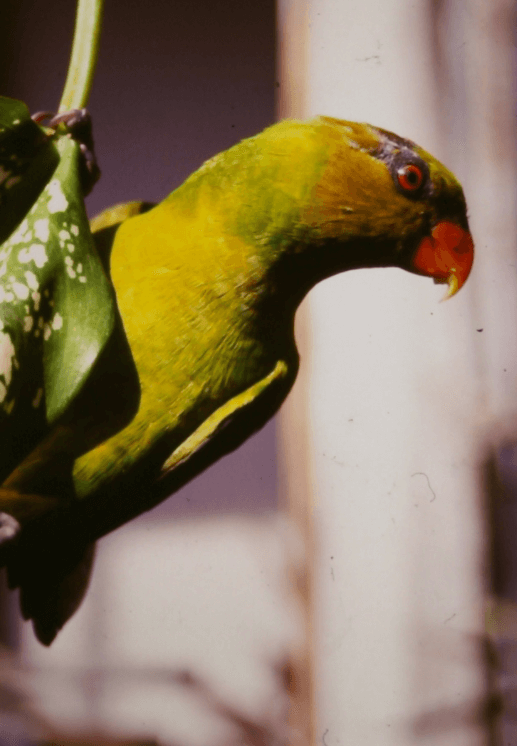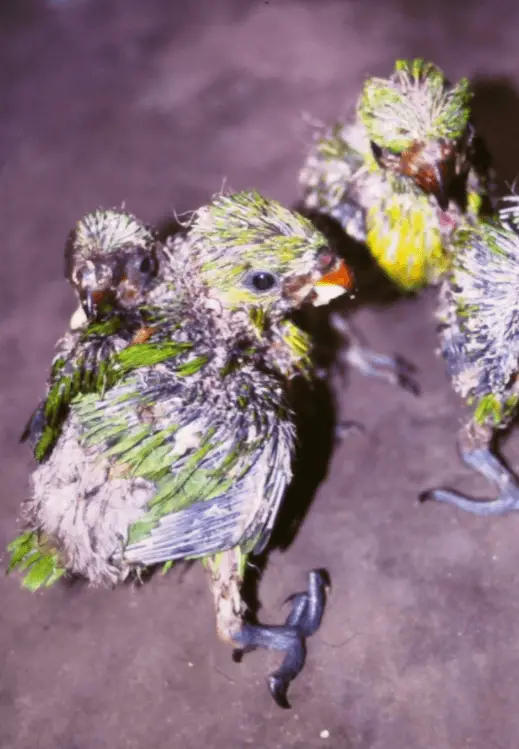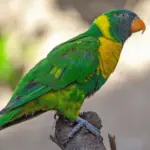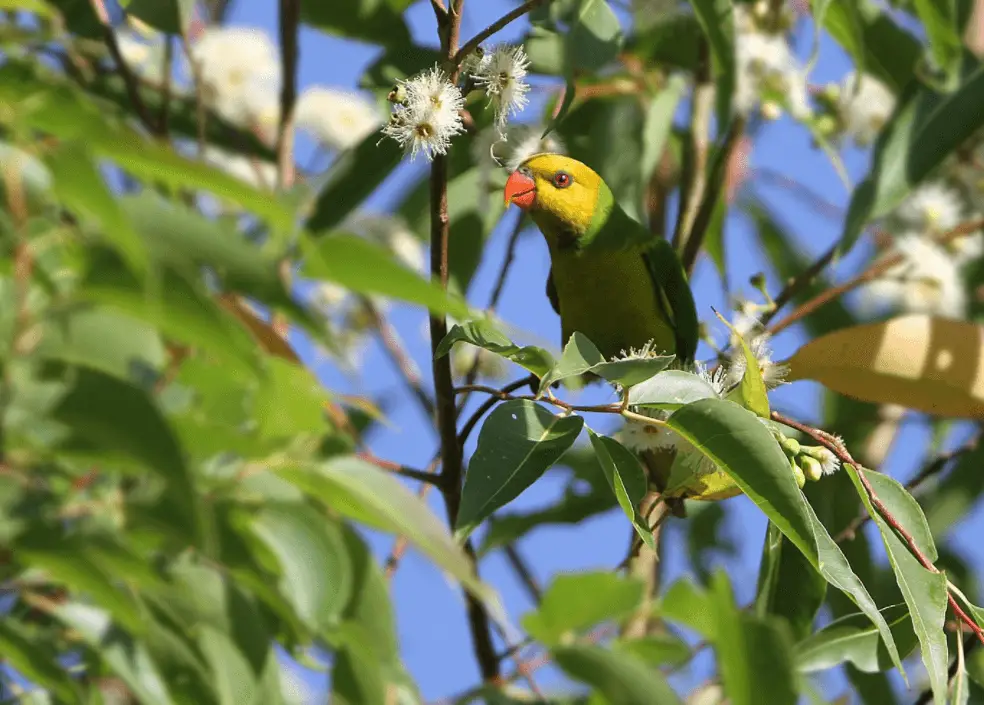Olive-headed Lorikeet parrot 25 cm. Bill orange-red; head olive-mustard with indistinct pale yellow streaks on the crown; upperparts green, with green of nape extending as an indistinct but usually complete broad collar around the throat;underparts below throat greenish-yellow. Immature duller, head greener.
Systematics History
Member of the putative T. chlorolepidotus species-group (see that species). Some authors consider T. weberi to belong to present species.

Subspecies
Monotypic.
Distribution
Lesser Sundas: Timor and adjacent small islands from Adonara and Lembata E to Nila and Babar.
Habitat
Primary montane forest, secondary growth and savanna woodland at roughly 1000–2300 m, apparently replacing T. haematodus at these elevations on Timor, although occasionally found at sea-level; in lowlands on other islands.
Olive headed Lorikeet

Movement
Diet and Foraging
No information other than visits flowering trees and shrubs.
HAND FEEDING OUR PERFECT LORIKEET – Squirt Blossom. Olive Headed Lorikeet, Trichoglossus euteles
SOURCE: Daybird Aviaries
Sounds and Vocal Behavior
Predominantly utters shrill high-pitched screeches rendered “kreet!” or “kurrk”, but also a more gentle lisping “tsleet!” and several subdued grating notes.
Breeding
No information from wild. In captivity: three eggs, size 24·5–25·3 mm × 22·5–23 mm; incubation period 23 days.
Olive-headed Lorikeet
SOURCE: Heri
Conservation Status
Not globally threatened. CITES II. A BirdLife “restricted-range” species. Local trade in the species exists.






















